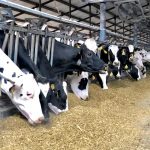
The history of the indexes goes back to January 1986 when they began at 100.
During March the world price index rose 6.1% compared with February to reach 341.6.
The NZ price index rose 7.4% to now sit at 254.9.
The world index was 20% higher than March 2020 and the NZ index 4% higher, reflecting the stronger value of the NZD.
Both indexes were lifted by dairy prices, which rose 12.7% in March and which make up 41% of the index weighting.
Dairy prices are high but they have been higher in recent times, during the 2008-09 commodities boom and again in 2013-14 when Fonterra’s record milk price of $8.40/kg was paid.
ANZ agricultural economist Susan Kilsby says the March record values for both commodity indexes were a combination of high prices for dairy, meat, fruit, forest products and aluminium.
None of the major commodities that make up the indexes were at their record highs individually.
She says commodities are leading the global economic recovery and prices may go higher as demand rises in world markets where people are vaccinated against covid-19.
“Demand for higher-value produce, which tends to be consumed in restaurants rather than at home, is expected to lift as lockdown restrictions are reduced,” Kilsby said.
She nominated venison and lamb racks for price recovery as consumer confidence returns.
However, container shortages and disrupted shipping schedules are making it extremely challenging to deliver goods to market on time and in tip-top condition.
“The shipping industry is continuously operating in catch-up mode,” she said.
“There simply are not sufficient ships available to move all the goods around the globe when port turnaround times are extended.”
She says while demand for our exports remains strong, the importers are picking up most of the increased shipping prices.
The shipping situation is fraught for exporters of fresh produce, such as chilled meat and fruit.
“Getting fruit to market this season looks more challenging than last season, when we were operating under Level 4 restrictions,” she said.
The strength in commodity prices is also reflected in the NZD exchange rates and ANZ expects the cross-rate against the US dollar to rise to 77c by the end of the year.
Kilsby also predicted a gradual fall in whole milk powder prices to US$3500/tonne by year-end.
In combination with the NZD strength, that produced her $7.30/kg milk price forecast for the 2022 season.
























